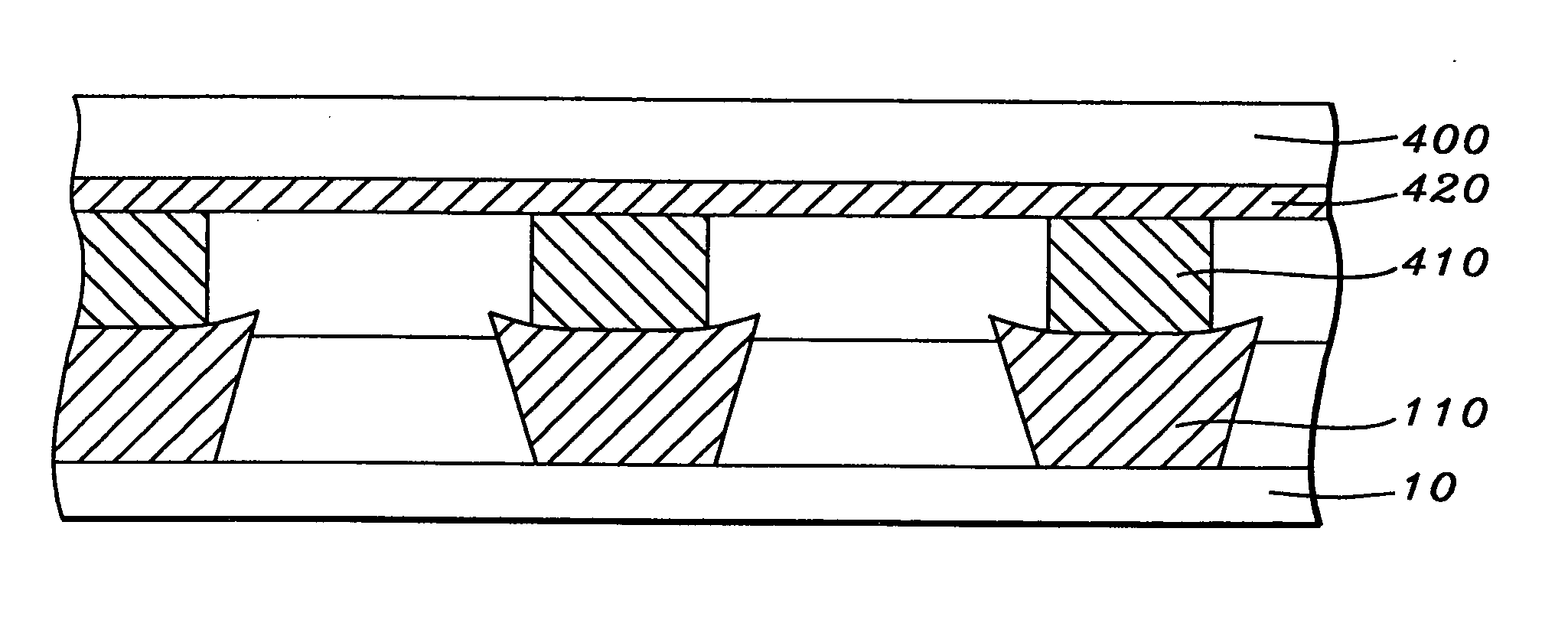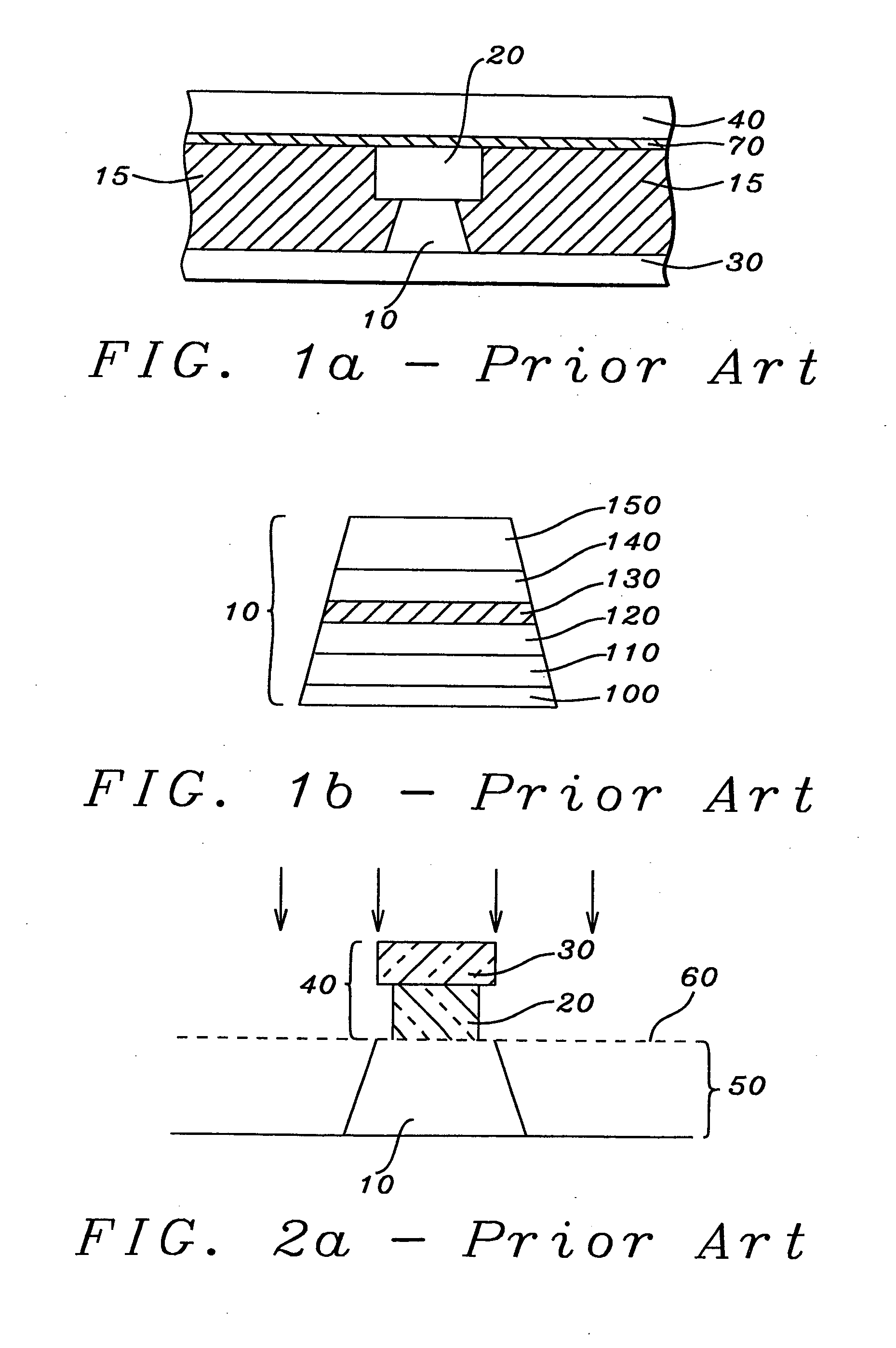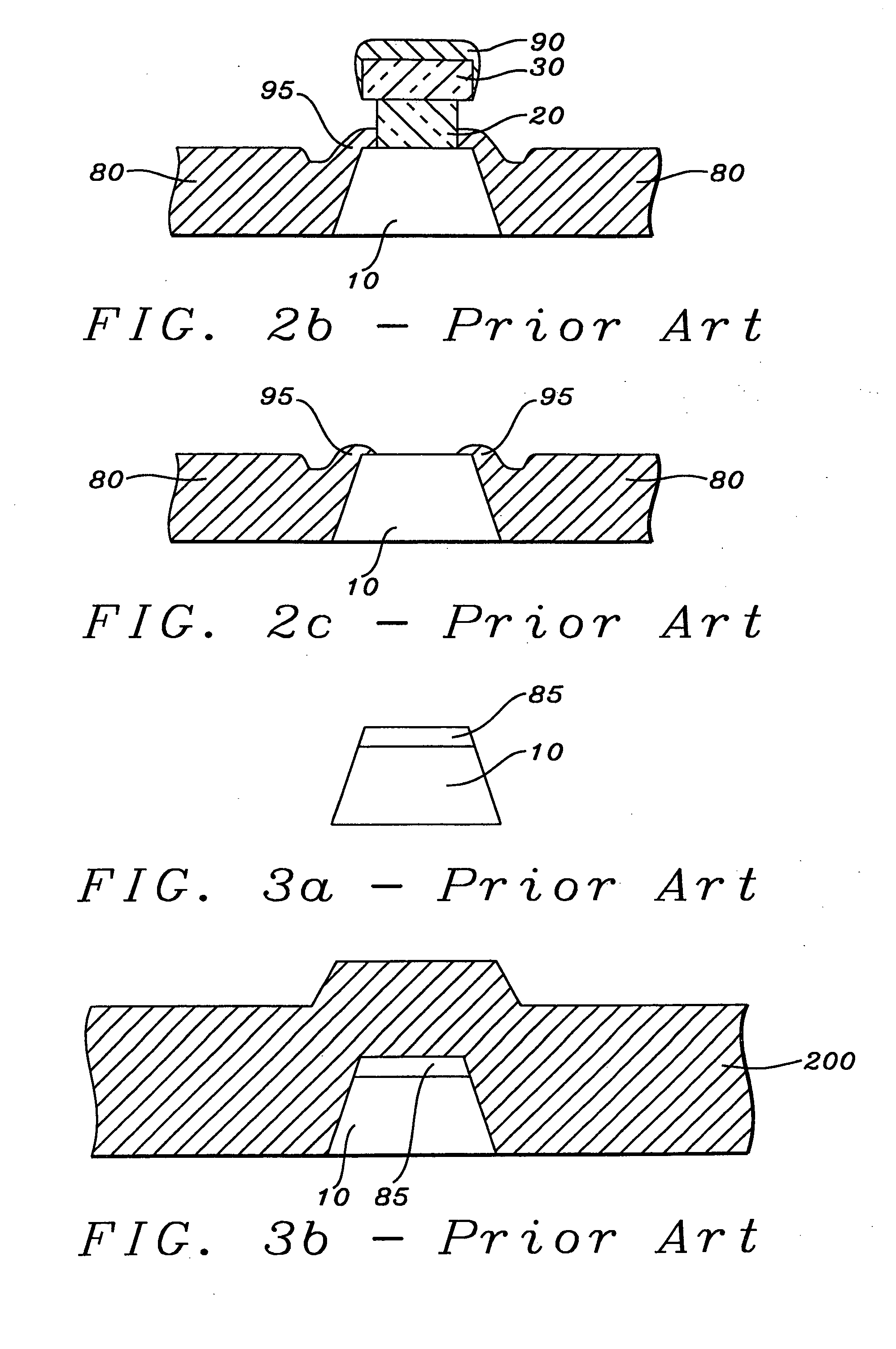MRAM cell with flat topography and controlled bit line to free layer distance and method of manufacture
a technology of mram cell and flat topography, which is applied in the direction of substrate/intermediate layer, spin-exchange-coupled multilayer, instruments, etc., can solve the problems of preventing satisfactory lifting off of the mask, affecting the production efficiency of the mram device, and affecting the quality of the mram device. , to achieve the effect of enhancing the magnetic field production, preventing the degradation of the characteristics of the mram device, and reducing the mram devi
- Summary
- Abstract
- Description
- Claims
- Application Information
AI Technical Summary
Benefits of technology
Problems solved by technology
Method used
Image
Examples
Embodiment Construction
[0028] The preferred embodiment of the present invention is a method of forming an MRAM cell (or an array of such cells) having a magnetic tunnel junction (MTJ) cell element, so that the cell topography is flat and the distance between the word line and the free layer within the element, the distance between the bit line and the free layer within the cell element or the distances between both the word and bit lines and the free layer within the cell element is well controlled. There is also provided the MRAM cell so formed.
[0029] Referring first to FIG. 4a, there is shown a substrate (10) upon which has been formed an MTJ film stack (20) (the “stack” being the laminated film structure which will subsequently be patterned to form one or a plurality of cell elements) augmented by the addition of capping (80) and sacrificial (90) layers in accord with the present method. The film stack comprises the following lamination of layers, going from bottom to top: a seed layer (30) which may ...
PUM
| Property | Measurement | Unit |
|---|---|---|
| thickness | aaaaa | aaaaa |
| thickness | aaaaa | aaaaa |
| thickness | aaaaa | aaaaa |
Abstract
Description
Claims
Application Information
 Login to View More
Login to View More - R&D
- Intellectual Property
- Life Sciences
- Materials
- Tech Scout
- Unparalleled Data Quality
- Higher Quality Content
- 60% Fewer Hallucinations
Browse by: Latest US Patents, China's latest patents, Technical Efficacy Thesaurus, Application Domain, Technology Topic, Popular Technical Reports.
© 2025 PatSnap. All rights reserved.Legal|Privacy policy|Modern Slavery Act Transparency Statement|Sitemap|About US| Contact US: help@patsnap.com



